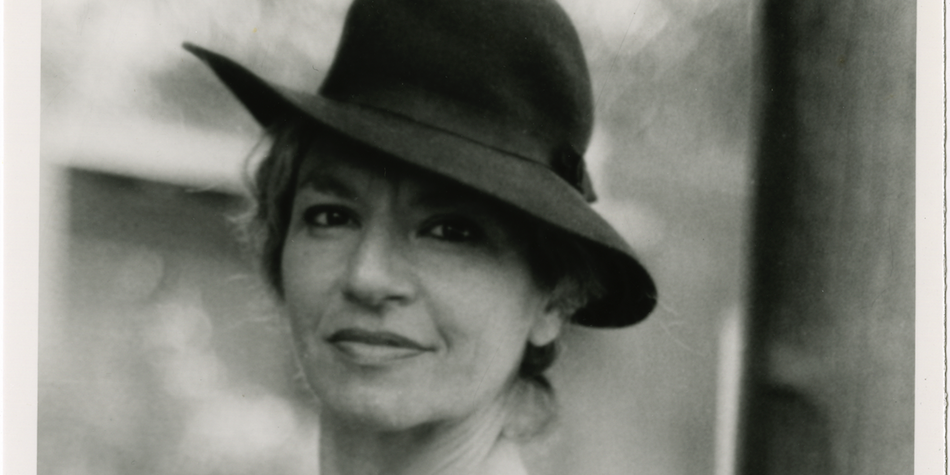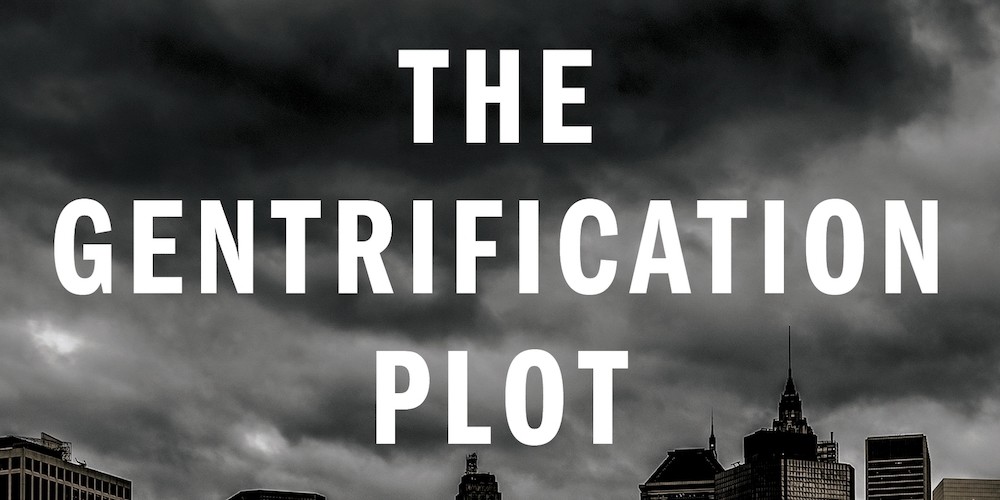It’s tempting to imagine Bette Howland as a figure of midcentury literary mythology. Who can resist the intrigue of her early crisis and success, quiet disappearance, and belated rediscovery? She is, as Honor Moore remarks drily in the afterword to Howland’s posthumous story collection, Calm Sea and Prosperous Voyage, “a member of a cohort who have benefited from the forty-year gap between the end of a woman’s youth and beauty when, at say forty, one’s reputation goes dark, until eighty or so, when one becomes a discovery.” The pitch for a prestige television biopic practically writes itself. I imagine it
- review • February 11, 2021
- excerpt • January 20, 2021
What should a crime novelist write about when there is not much crime to write about anymore? This question weighed on the minds of the crime writers Lee Child, Reggie Nadelson, and George Dawes Green during a discussion in 2009 on New York Public Radio’s The Leonard Lopate Show. Invited to chat about “New York City Thrillers,” the three novelists found themselves instead musing about how the city had become less thrilling over the years. “It’s a very benevolent, peaceful place,” Child noted with a touch of sadness. “New York has changed, I think, in terms of crime. It’s relatively
- excerpt • January 13, 2021
Daniel Menaker (1941–2020) was a fiction editor at the New Yorker, the editor in chief of Random House, and the author of seven books, including the celebrated novel The Treatment (1998) and the 2013 memoir My Mistake. Last January, Menaker received a terminal diagnosis of pancreatic cancer, and spent the next months chronicling his illness in verse, writing with mournful honesty and surprising humor about his diagnosis and treatment against the backdrop of the pandemic’s larger “sickness circus.” In his own words, Dan “wrote poetry his whole life, but kept it to himself for a long time, after being told
- review • January 5, 2021
Grief memoirs typically meditate on the loss of someone so close to the author that they could have listed the deceased as an emergency contact. Candace Jane Opper’s Certain and Impossible Events is not that kind of memoir. The book revolves around the death of a boy Opper wasn’t exactly close with—a crush whose phone number she memorized when she was thirteen. He died by suicide, at age fourteen, in 1994, eight days after Kurt Cobain’s body was found. More than twenty-five years later, Certain and Impossible Events is Opper’s attempt to map her ongoing obsession with the boy’s death.
- excerpt • December 29, 2020
In 1937, her father moved the family to an all-white neighborhood in Chicago to deliberately challenge the constitutionality of racial restriction clauses. In response, a white mob gathered and threw a brick through their window, narrowly missing eight-year-old Lorraine. The Hansberry case moved through the court system, with the Supreme Court of Illinois upholding the legality of restrictive covenants and forcing the Hansberrys out of their home. The case then went all the way to the United States Supreme Court in Hansberry v. Lee, 311 U.S. 32 (1940), which reversed the lower court’s decision without providing a more general ruling
- excerpt • December 18, 2020
I’m after a worldview.
- print • Dec/Jan/Feb 2021
ON DECEMBER 25, 1991, Gorbachev appeared on snowy televisions in the homes of millions, gray faced against gray wallpaper, to resign as the leader of a state that no longer existed. He handed over the keys and a briefcase full of nuclear codes to Yeltsin, and the red flag was lowered. George Bush Sr. quickly got camera-ready on Christmas, addressing the American people, “During these last few months, you and I have witnessed one of the greatest dramas of the twentieth century.” The Soviet Union was over, but the year was ending on a cliffhanger. Cut to January 2, 1992:
- print • Dec/Jan/Feb 2021
IF CRAFTING THE PERFECT seating arrangements is a delicate art for blue bloods—and vandalism is the opposite of art, as well as a pastime for talented poor people—then it follows that party reporting, at its most refined, is a form of controlled demolition on private property. In their heyday, party reporters were a bit like graffiti artists on the Upper East Side, tagging the marble walls (“Slut!” “Bankrupt!”) as fast as they can be cleaned up. What is a personal publicist but an overpaid janitor with a pressurized hose?
- print • Dec/Jan/Feb 2021
THOUGH THERE IS NO SHORTAGE of preposterous tales told in André Gregory’s memoir, the most implausible is that a well-off New Yorker like Gregory, living rent-free in an Upper West Side apartment in the late 1960s, would voluntarily take the subway downtown, every day for months, to watch three men sit at a table in an East Village classroom and slowly go insane. The men, who were actors under Gregory’s direction, spent the days improvising the tea party scene from Alice’s Adventures in Wonderland. They played it as the mood struck, veering from maniacal to pornographic to scatological. Bathroom breaks
- print • Dec/Jan/Feb 2021
A FRIEND OF MINE dating a famous artist jokes that she dreads her obituary reading that she, in addition to having been the girlfriend, was “accomplished in her own right.” In her own right! The mind heaves. Anyone who has been romantically involved with a famous artist knows the risk of being overshadowed. For those who nurture artistic ambitions themselves, the challenge is twofold: to avoid being subsumed by their partner’s success and to insist upon the importance of their own work. Self-Portrait, Celia Paul’s memoir and account of her decade-long entanglement with Lucian Freud, is both the story of
- print • Dec/Jan/Feb 2021
ONE OF THE LAST THINGS the queer theorist José Esteban Muñoz published before his untimely death in December 2013 was an essay titled “Race, Sex, and the Incommensurate.” In it, Muñoz reflects on a question that had colored much of his career: politics’ relationship to queerness. The essay was, more simply, Muñoz’s reflection on what he described as “the strange and compelling collaboration between Eve Kosofsky Sedgwick and her friend Gary Fisher.” Fisher was, like Muñoz, a graduate student of the queer theorist Sedgwick. He was also, unlike Sedgwick, queer and African American. When Fisher died in 1994 of AIDS,
- print • Dec/Jan/Feb 2021
IN JUDD APATOW’S MOVIE This Is 40, from 2012, a married couple played by Leslie Mann and Paul Rudd take a weekend trip to a hotel, where they get in bed and discuss their relationship. Rudd tells Mann that sometimes he feels like she wants to kill him. She admits that’s true, so he asks her how she’d do it. “I’d poison your cupcakes,” she answers, explaining that she would put in just enough toxin to slowly debilitate him. “I would enjoy our last few months together,” she tells her husband, “because you’d be so weak and sweet, and I
- print • Dec/Jan/Feb 2021
Ming Smith, Greyhound Bus, Pittsburgh, 1991, gelatin silver print. From the series “August Moon for August Wilson,” 1991. © Ming Smith, Courtesy the artist and Aperture SOON AFTER ARRIVING in New York in 1973, Ming Smith sold two pictures to the Museum of Modern Art (New York), becoming the first Black woman to be granted […]
- print • Dec/Jan/Feb 2021
Noah Davis, Mary Jane, 2008, oil and acrylic on canvas, 60 × 52 1/4″. Courtesy and © The Estate of Noah Davis, Private collection of Michael Sherman and Carrie Tivador PROTEAN PAINTER NOAH DAVIS had emerged as a catalytic force when he died of cancer at age thirty-two. His swift evolution promised an exciting future, […]
- print • Dec/Jan/Feb 2021
I FIRST SHARED a TikTok video in my Instagram story on April 20, 2020, right around the time I ran out of tolerable TV series to binge and an inability to read anything other than tweets set in. It took me a while to realize I could download it, the video I mean—a Belgian man’s inexplicably menacing take on the “turn around” portion of Bonnie Tyler’s “Total Eclipse of the Heart”—because I initially found the app’s interface so counterintuitive that I was reluctant to explore. For anyone used to the polished calm of Instagram, TikTok’s chaotic ugliness is disorienting. Each
- print • Dec/Jan/Feb 2021
NEAR THE END OF SUITE FOR BARBARA LODEN, Nathalie Léger’s guerrilla-critical reckoning with Loden’s 1970 film, Wanda, Léger visits a ghost town in Pennsylvania, not far from where the movie is set. A coal seam has been burning underground there since 1962, “an inferno buried beneath the town that slowly, slyly devastated everything, engulfing gardens, swallowing cars, and sometimes apparently children too.” Though a sign reads, WELCOME TO HELL, Léger notices “no sign of destruction, no trace of those terrible events. . . . This is what hell must be: erasure. And down below, the fire rages on.”
- print • Dec/Jan/Feb 2021
Chantal Akerman often said that she carried within her a deep sense of unbelonging. “But someone once told me that when you make films you put your whole self in,” she wrote near the end of her life. “I don’t know, I don’t know myself, certainly not all of myself.” For those wanting more of her, from her, CHANTAL AKERMAN: PASSAGES (Eye Filmmuseum / nai010 publishers, $40) brings to light her lesser-known work as a visual artist. This companion catalogue to a retrospective of eight film installations presented at Eye Filmmuseum (Amsterdam) this summer includes essays that mark the translation
- excerpt • November 18, 2020
Now I would like to acknowledge that I also feel a responsibility to write for puppets. I have five puppets in my life, they are not ten feet from me in two small cardboard boxes on my desk. They deserve better.
- print • Apr/May 2011
Wilhelm von Gloeden, Girl in a Garden. I met Daniel at 4:00 one August morning in 1999. It was on the roof of my building, where, in the grip of a long bout of insomnia, I would wait for first light to mark the end of another summer night. Daniel couldn’t sleep either. He was […]
- print • Apr/May 2011
I am not the sort of person who would ordinarily elect to dine at Grant Achatz’s radical Chicago restaurant Alinea, which features “mischievous science-project cooking,” as New York Times restaurant critic Sam Sifton recently described it. I am generally put off by meals that are as much pyrotechnics as pleasure. I am not interested in dried crème brûlée, which appeared on Achatz’s first menu, and I find his description of angelica branches filled with apple puree—one element of the twenty-six-course dinner he prepared for a former Chicago Tribune food writer and his friend—more obnoxious, not to mention exhausting, than enticing:

















